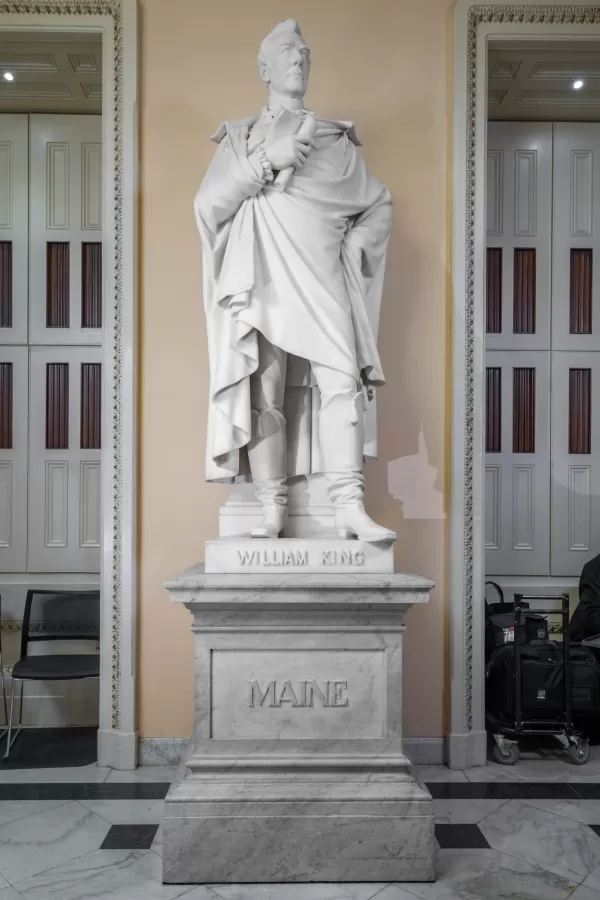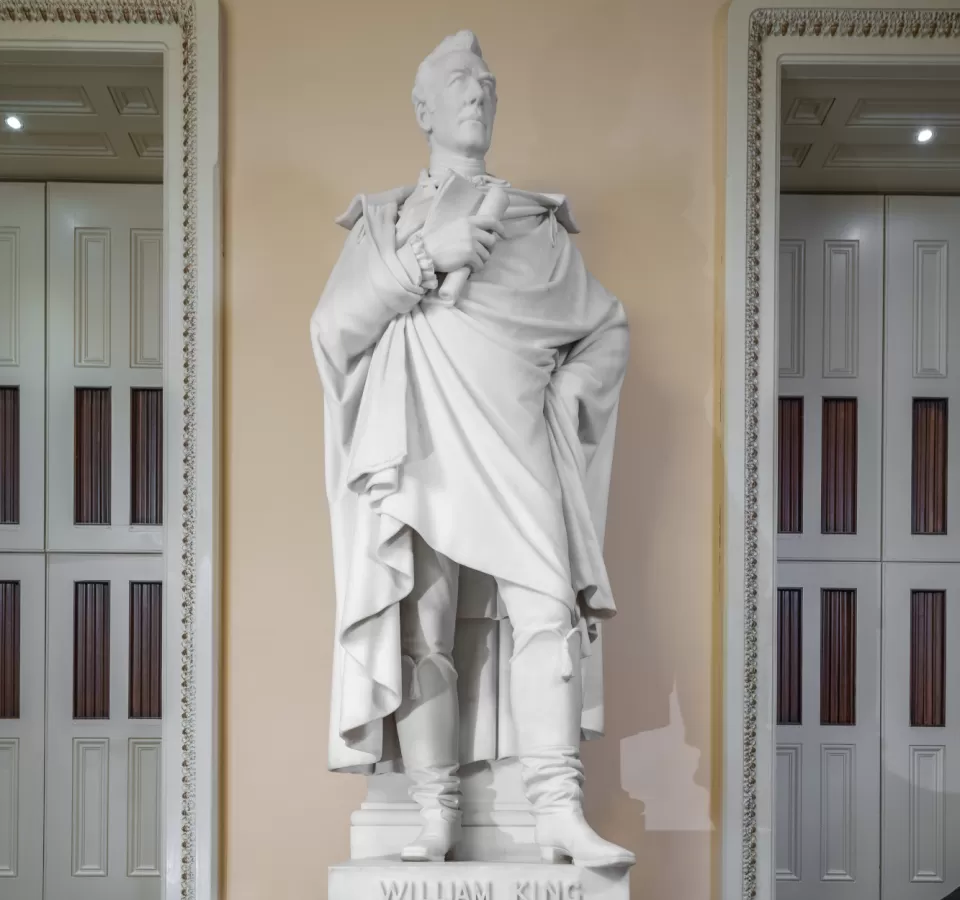Highlights
This statue of William King was given to the National Statuary Hall Collection by Maine in 1878.
William King was born on February 9, 1768, in Scarboro, Maine, then still part of Massachusetts. His formal education was limited, ending at the age of 13. An enterprising nature compensated for his lack of schooling. Beginning work in a Topsham sawmill, he became the largest ship owner in Maine and a successful merchant. King also owned extensive real estate, was a principal owner of Maine's first cotton mill in Brunswick, and was a founder and president of Bath's first bank.
Active in local politics beginning in 1795, he served in Massachusetts General Court, representing Topsham in 1795 and 1799 and Bath in 1804. He served twice as state senator for Lincoln County, from 1807 to 1811 and 1818 to 1819. During the War of 1812 he served as major general in the militia and provided recruiting assistance as a colonel in the United States Army. As a major shipper, he directed much of his attention to protecting the coastal and marine trade. In 1813, King began the effort for which he is best remembered. Residents of Maine had suffered hardships during the war and petitioned Massachusetts for separation. King worked for seven years and statehood for Maine was granted in 1820.
Elected its first governor, King served until 1821, when he was appointed commissioner to work on the treaty with Spain, a post he held for three years. Even though King was a poorly educated man, he was a trustee of Waterville (now Colby) College, and trustee and overseer of Bowdoin College. King died on June 17, 1852.
Artist
Sculptor Franklin Simmons, born in Maine in 1839, developed an early interest in painting and sculpture. After college he moved to Washington, D.C., where he sculpted relief portrait busts of cabinet members and military officers. In 1867, he moved with his wife to Rome and established a studio; except for occasional trips back to the United States, he remained there for the rest of his life. Working in the neoclassical style, he created statues and busts of figures from public life, mythology, and literature.
He was commissioned by the Grand Army of the Republic to sculpt a statue of General Grant to be given to the Congress, and legislation passed in 1890 authorized its acceptance. The first statue that Simmons created was not approved because it was not a good likeness; he sent a second version in 1899, and it was placed in the Rotunda in 1900.
His other works on Capitol Hill include Peace Monument on U.S. Capitol Grounds; statues of Ulysses S. Grant, Francis Harrison Pierpont and Roger Williams in the U.S. Capitol; and busts of Vice Presidents Charles W. Fairbanks, Hannibal Hamlin and Adlai E. Stevenson in the U.S. Senate collection. Simmons died in Rome in 1913.

